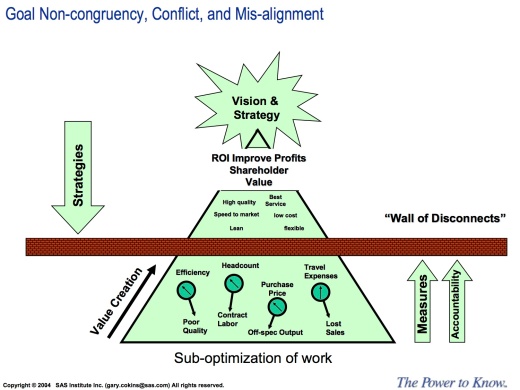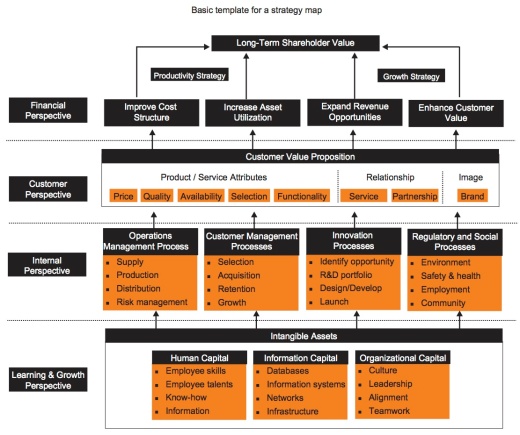Firstly I have have to apologise for being “off-line” for some time. Besides the stress of renovating and doing my CPA unit, I did actually get a great break in Europe out of it.
Back to strategic management. One of the biggest challenges once companies have identified the values that they want to offer to their customers is to break that value system to the employees, its organisation and convince their staff to deliver on it. A better ways to express it is the “walls of disconnects” between a companies strategy and measuring its outcome.
Robert S Kaplan and David Norton have come up with the Strategy Map concept which basically aims to build the bridge across the “Wall of Disconnects” and look at the strategy from all perspectives of an enterprise (holistic view) and at the same time build causal links and references between the various perspectives. This will allow an organisation to cascade down the strategy across all its hierarchies. At the same time it is imperative that the strategy is reflected in the measurement system and KPIs the organisation uses to assess its success.
The Balanced Scorecard model allows to do both at the same time. It takes all necessary perspectives into account and then guarantees that KPIs on all perspectives are identified to measure the right information.
This basic template for a strategy map will link the various perspectives. The next step is to assign Objectives, Measures, Target for these measures, Initiatives and Budgets by way of the Balanced Scorecard, that will help to translate strategy into operations.
—–
Kaplan, R S & Norton, D P 2004, Strategy Maps – Converting Intangible Assets Into Tangible Outcomes, Summaries.com 2004, viewed November 2010, http://www.sas.com/offices/asiapacific/taiwan/document/sm.pdf
Cokins, G 2004, Performance Measurement, SAS Institute Inc. 2004
Performance Management – Making It Work (Part 1)
Strategy Maps and Balanced Scorecards for Navigation and Speed (Part 2)
Measuring and Managing Customer Profitability with Customer Value Management (Part 3)
Data Mining to Support Performance Management with Analytical Intelligence (Part 4)


